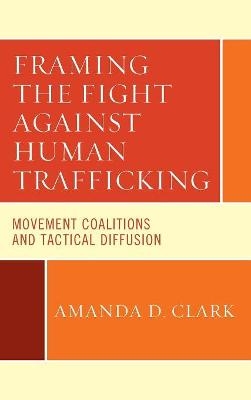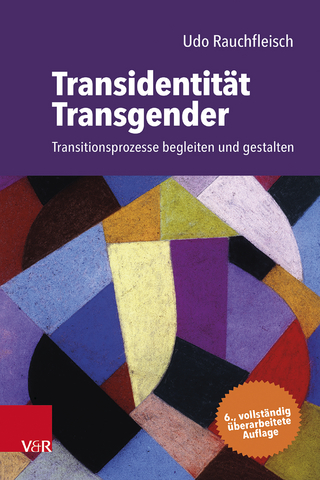
Framing the Fight against Human Trafficking
Movement Coalitions and Tactical Diffusion
Seiten
2019
Lexington Books (Verlag)
978-1-4985-8625-2 (ISBN)
Lexington Books (Verlag)
978-1-4985-8625-2 (ISBN)
Framing the Fight against Human Trafficking examines the framing strategies of a prominent social movement coalition in the field. The author argues coalition learning aided by the organizational structure of the group led to tactical diffusion and innovative use of action repertoires in the anti–human trafficking movement.
Nongovernmental organizations (NGOs) in the anti–human trafficking movement have proliferated over the past few decades, each focusing on different aspects of the problem. Many of these NGOs have joined coalitions to pool resources and expertise. What are the messages that NGOs use to define and prescribe solutions to the human trafficking issue? How do changes in the external political environment or the internal coalition structure impact NGO framing strategy? This book uses a unique dataset to illustrate and analyze the discursive processes of NGOs over three distinct time periods: 2008–2010, 2011–2012, and 2013–2014. The data was gathered from public documents and supplemented by interviews from fifteen US anti-trafficking NGOs involved in the Alliance to End Slavery and Trafficking (ATEST). This analysis shows that the ATEST coalition has targeted the state (contentious politics) and private industry (private politics) to advance its antihuman trafficking agenda. Sex trafficking has normally been met with tactics from the contentious politics model due to its historical legal connection with prostitution; labor trafficking, on the other hand, has been approached via the private politics model due to its connection with business. However, due to the coalition’s formal organizational structure, members have been able to learn from each other and adopt tactics normally reserved for certain types of targets in new ways, such as using contentious political strategies for labor trafficking and vice versa. This study builds theory by showing how coalition learning in social movements across time periods can diffuse tactics and provide new action repertoires for coalition members.
Nongovernmental organizations (NGOs) in the anti–human trafficking movement have proliferated over the past few decades, each focusing on different aspects of the problem. Many of these NGOs have joined coalitions to pool resources and expertise. What are the messages that NGOs use to define and prescribe solutions to the human trafficking issue? How do changes in the external political environment or the internal coalition structure impact NGO framing strategy? This book uses a unique dataset to illustrate and analyze the discursive processes of NGOs over three distinct time periods: 2008–2010, 2011–2012, and 2013–2014. The data was gathered from public documents and supplemented by interviews from fifteen US anti-trafficking NGOs involved in the Alliance to End Slavery and Trafficking (ATEST). This analysis shows that the ATEST coalition has targeted the state (contentious politics) and private industry (private politics) to advance its antihuman trafficking agenda. Sex trafficking has normally been met with tactics from the contentious politics model due to its historical legal connection with prostitution; labor trafficking, on the other hand, has been approached via the private politics model due to its connection with business. However, due to the coalition’s formal organizational structure, members have been able to learn from each other and adopt tactics normally reserved for certain types of targets in new ways, such as using contentious political strategies for labor trafficking and vice versa. This study builds theory by showing how coalition learning in social movements across time periods can diffuse tactics and provide new action repertoires for coalition members.
Amanda D. Clark, PhD, is independent scholar.
List of Figures and Tables
Acknowledgments
Introduction: Framing the Fight against Human Trafficking
Chapter 1: Collaborating to End Human Trafficking
Chapter 2: Social Movement Framing and Issue Definition
Chapter 3: Solidifying the Base 2008-2010
Chapter 4: Addressing Challenges 2011-2012
Chapter 5: Growing by Learning 2013-2014
Conclusion: Diffusion, Identity, and Movement Success
Bibliography
Appendix A- Membership of ATEST 2007-2014
Appendix B- Acronyms and Websites
Appendix C- Document Count by NGO by Year
Appendix D- Interview Protocol
Appendix E- Interviewee List
Appendix F- Weighting Formula and Data Collection
| Erscheinungsdatum | 10.05.2021 |
|---|---|
| Verlagsort | Lanham, MD |
| Sprache | englisch |
| Maße | 158 x 242 mm |
| Gewicht | 472 g |
| Themenwelt | Geisteswissenschaften ► Psychologie ► Sexualität / Partnerschaft |
| Sozialwissenschaften ► Pädagogik ► Sozialpädagogik | |
| Sozialwissenschaften ► Politik / Verwaltung ► Staat / Verwaltung | |
| Sozialwissenschaften ► Soziologie | |
| ISBN-10 | 1-4985-8625-2 / 1498586252 |
| ISBN-13 | 978-1-4985-8625-2 / 9781498586252 |
| Zustand | Neuware |
| Haben Sie eine Frage zum Produkt? |
Mehr entdecken
aus dem Bereich
aus dem Bereich
Transitionsprozesse begleiten und gestalten
Buch | Softcover (2024)
Vandenhoeck & Ruprecht (Verlag)
CHF 48,95
Wege aus dem Chemsex-Konsum bei MSM
Buch | Softcover (2022)
Psychiatrie Verlag
CHF 34,95
die wichtigsten Konzepte, Tools und Interventionen
Buch | Softcover (2023)
Vandenhoeck & Ruprecht (Verlag)
CHF 34,95


